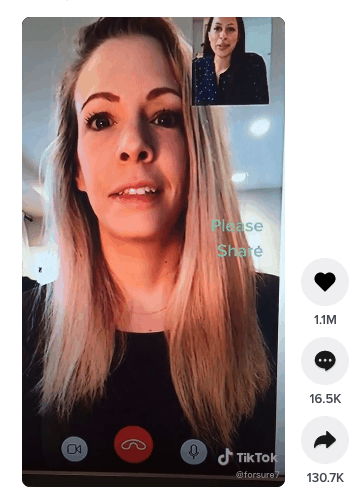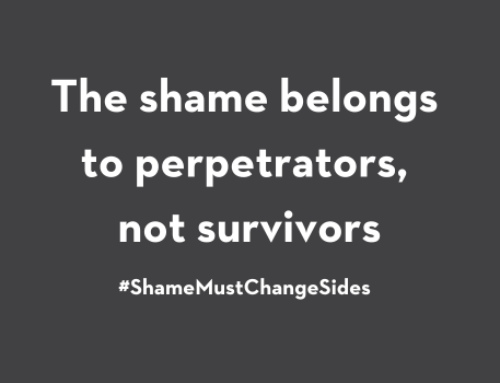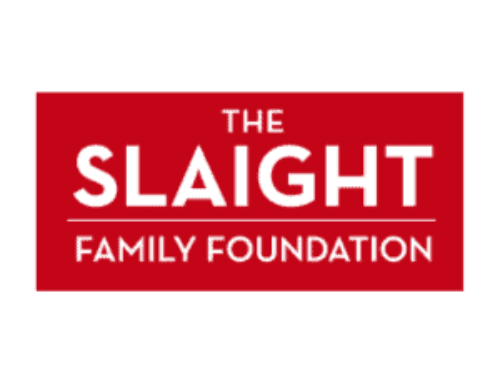The ad came on just as Rashda was turning off the TV and heading to bed. Not only did she stop to watch – she decided it should go on TikTok.
It was a public service announcement showing the Signal for Help, a hand sign people can use on a video call to silently indicate that they need help and want someone to check in with them safely. The Canadian Women’s Foundation launched the Signal for Help in response to COVID-19 pandemic isolation measures, which make it more difficult for those at risk of abuse or violence to reach out.
“The ad really hit me because the message was so powerful,” Rashda said. “I decided to rewind it, record it, and make a video of it for TikTok because I thought it was really important to share.”
Within 24 hours, her TikTok following grew from 86 people into hundreds, and then thousands as people shared her Signal for Help post. They responded with comments like, “‘I wish this was around when I was in an abusive relationship’ or ‘This is a really important message, we are going to share it’,” she said.
Rashda also began receiving questions about the Signal for Help from around the world and in various languages. She reached out to the Canadian Women’s Foundation to let us know about the response to her post and find out more about the campaign.
Her experience is just one recent example of how the platform best known for silly dance videos can also propel social awareness and change. “TikTok activism” is credited with quashing participation at a recent rally for U.S. President Donald Trump, as well as amplifying Black Lives Matter through user videos highlighting police brutality and protests.
When it comes to gender equality, UN Women partnered with TikTok India last year to raise awareness about gender-based violence. Some women in tech have used the platform to draw attention to the lack of gender diversity in their field and in STEM professions. Others have used the platform to highlight their experiences with discrimination, stereotypes, or the need for feminism and gender equality, while some Indigenous women and girls are using TikTok to share everything from fashion, to comedy, to social issues and activism.
But, like other social media platforms, TikTok has been criticized for its impact on girls and young women, particularly when it comes to hypersexualization, body image, bullying, and trolls. Concerns about personal data being collected by TikTok figured into India’s recent decision to ban the app, and the U.S. has also considered a ban.
In the meantime, the app’s social influence continues to grow since people have flocked to TikTok during the pandemic and its audience has expanded beyond Gen Z. If you’re on TikTok, or any other social platform, and want to use its power for good, please consider raising awareness about the Signal for Help by downloading the toolkit. On TikTok, you can do a duet with our posts – like this one. Home is not a safe place for everyone, and those at heightened risk of abuse or violence during the pandemic may be able to use this sign to get the help they need.
Learn more about the Signal for Help.
Learn more about TikTok and parental tips for children’s safety.
Follow the Canadian Women’s Foundation on TikTok.







